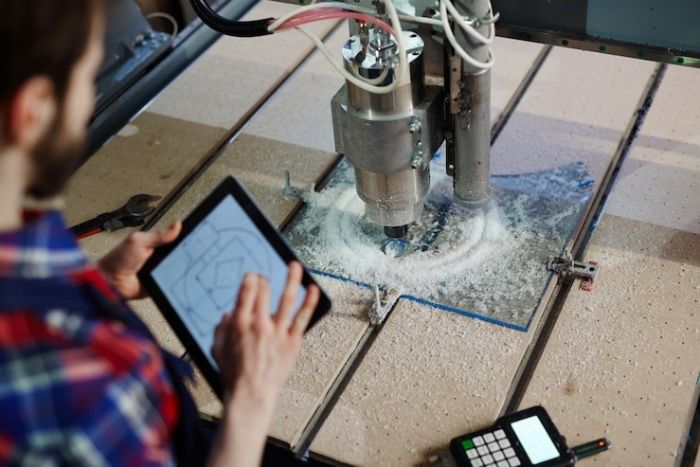CNC – computer numerically controlled- machines are a part and parcel of present-day manufacture that actually defines precision and efficiency; although, like all modern machines, they give rise to problems and thus disrupt operations. Once Cnc Machine Manufacturers In Melbourne figure out the problems, they would have much less downtime, and also the performance would be optimal during the period.
Common problems related to CNC machines:
Disorders of Mechanics:
CNC Machine has several mechanical components. Its components include bearings, lead screws, spindles, etc. Mechanical issues often include:
- Excessive Vibration: Usually caused by worn-out bearings or misaligned components which lead to inaccurate machining and surface defects.
- Backlash: Play or Slack in the machine’s mechanical drive components can lower precision.
- Tool Wear and Breakage: Dull or broken tools are responsible for low-quality output along with increased stress on machinery.
Software and Programming Errors:
Wrong programming or software applications in CNC machinery may result for undesired operations like:
- Wrong G-code: Misprogrammed G-code commands will lead to unwanted operations by a machine.
- Post-Processor Incompatibilities: Translation errors can occur between the design and machining when the post-processor has software issues.
- Controller Failure: CNC controllers may be either old or defective and hence fail to execute commands precisely.
Electrical Problems
The term malfunctions due to power supply can also be applied to electrical failures. The electrical failures in mention can be among:
- Power Surges: Sudden voltage spikes often damage sensitive electronic components.
- Faulty Wiring: The loose or corroded connections may lead to erratic behavior of the machine.
- Sensor Failures: Faulty sensors give wrong feedback to the machine which, in turn, results in disruption of the operation of the machine.
Alignment and Calibration Problems
For accuracy, alignment and calibration should be done correctly. Some alignment problems would include:
- Axis Misalignment: When an axis is misaligned, it will lead to incorrect tool paths and thus incorrect part dimensions measured for the part.
- Calibration Drift: Regular use will gradually lead to calibration drift errors that negatively impact the accuracy.
The electric failures are the major ones of the most ordinary failures in CNC machines. The live errors of electrical failure can be:
- Power Surges: Voltage suddenly spikes and can damage very sensitive electronic components.
- Faulty Wiring: Loose or corroded connections lead to erratic behavior of the machine.
- Sensor Failures: Faulty sensors give wrong feedback to the machine which, in turn, results in disruption of the operation of the machine.
Alignment and Calibration Issues
Alignment and calibration should be performed properly for better accuracy. Some of the alignment issues are:
- Axis Misalignment: Misaligned axes can cause incorrect tool paths and part dimensions.
- Calibration Drift: Usage will expose gradual developments that result in calibration errors diminishing accuracy over time.
Cooling and Lubrication Problems
Indeed, CNC machines produce heat and friction, making cooling and lubrication indispensable for their smooth operations. Some of the problems in this regard are as follows:
- Blocked Coolant Flow: When the free flow of coolant is restricted, it can lead an overheated tool or workpiece into putting on damage.
- Lack of Adequate Lubrication: Components become too dry or not properly lubricated and sometimes cause early wearing out, resulting in some lifetime reduction of the machine.
Material Related Challenges
Inconsistencies in the materials can negatively affect the machining process. Typical material associated challenges include:
- Hardness Variation in Material: Unequal hardness bounces between tools causing uneven machining or tool wear.
- Buildup of Chips: A high level of excess chips leads to machine congestion and also surface damage as a result due to stopping machine work.
Errors by Operators
Automated machines are often still susceptible to yo-man errors in part made by CNC machinery. The following are examples of such mistakes:
- Misusing Apparatus: Mismatch between setup of tool and workpiece is likely to furnish improper machining.
- Excess Carrying Load: Too quick, too deep cut of material has almost always given undue strain to the machine.
Environmental Factors
The environment around the CNC machine can have some effects on the performance of the machine:
Temperature Variance: Variations in temperature lead to extension and contraction of metal bodies, affecting accuracy. Dust and Debris: Intruders disturb the sensitive parts like sensors and motors.
Neglect to Maintain
CNC machines need regular maintenance, and maintenance related problems include:
- Delayed Servicing: Prolonged duration leads to more deterioration with maturation.
- Ignoring Warning Signs: Most issues which may be relatively small are actually opening up for catastrophic breakdowns.
Prevention and Troubleshooting
- Regular Maintenance: Schedule for inspections at established time intervals for mechanical, electrical, and software components. Clean and lubricate moving parts from time to time.
Training and Skill Proficiency Build up
- Operating personnel should be well trained in setting and programming.
- Provide recap courses on the latest developments in CNC technology. c. Software Upgrading
- Employ the latest software and controllers to avoid compatibility issues and poor performance.
Monitoring Systems
- Install systems that keep track of how a machine is performing and pinpoints any problems early.
- Reliable Cnc Machine Suppliers In Melbourne can ensure much better performance of the machines and can deliver on-time technical support.
Conclusion
Thus, these are common CNC machine problems but by tackling them proactively that mostly CNC machine she manufactured in Melbourne stand a better chance to increase productivity while ensuring precision and extending the lifespan of the machines.

